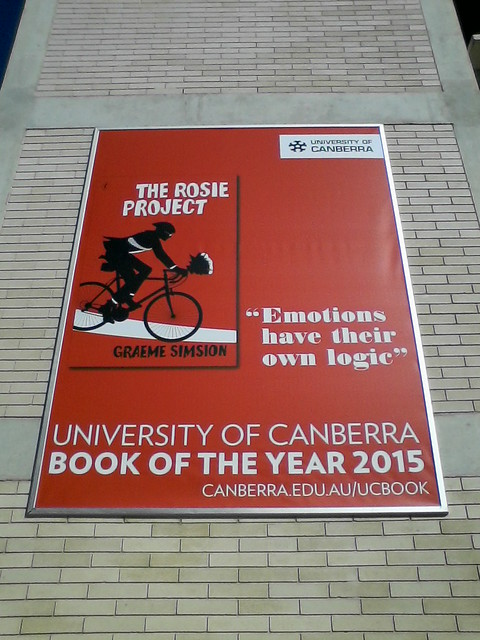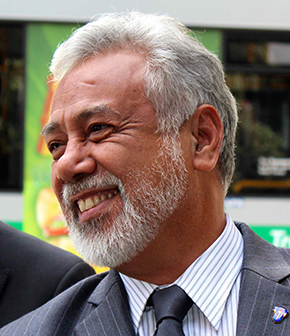Greetings from the
UNSW Campbelltown Library. Seeking more content for my
innovation course, I have tracked down the
only copy of Kirk, Cotton and Gates
(2012) in an Australian public library. In doing so I feel I am back on a journey started twenty years ago. In 1996 I spent several sessions in the ANU library, reading one of the few copies of the report "The Cambridge Phenomenon" (Segal Quince & Partners, 1985) in Australia. I very much had the sense I was holding a precious commodity to which I had limited access. I made extensive notes, appropriately enough on a
Cambridge Z88 portable computer. These notes became Appendix A "
The Cambridge Phenomenon - Summary of the Report" in Worthington (1999). I have had to drive three hours to read the sequel: I hope it is worth it.
The new the book is much glossier than the original. The forward is by Bill Gates (There is a
Microsoft Research Lab at Cambridge, adjacent to the new Cambridge University Computer Lab). The preface is by Charles Cotton, founder of
Cambridge Phenomenon Limited (which appears to have been set up just to write this book) and mentions the
Hauser Forum (in the West Cambridge Research and Development Park).
There is a two page diagram "
Cambridge Ideas Change the World" which is also available on-line as a PDF document. This takes some liberties with history to place Cambridge at the center of developments in Genomics, Monoclonal Antibodies, Computing and Software. As an example, the Computing time line starts with Charles Babbage and his Difference Engine in the 1800s (was this done at Cambridge?), then Alan Turing before getting on to firmer ground with the
1946 EDSAC computer
which was built at Cambridge. The last step in this is the formation of ARM at Cambridge in the 1990s (I visited there a few years after the company was formed and wish I had bought some shares).
The introduction of the book is on firmer ground starting with Tim Eiloart founding
Cambridge Consultants in 1960. The authors estimate that 4,000 technology companies have been set up around Cambridge since the 1960s, with 1,400 in 2012 and 48,000 employees.
The chapter on the early days acknowledges Cambridge Scientific
Instrument Company, found by Horace Darwin in 1881 to make precision instruments, but it was not until the 1960 that conditions were right to make such companies more than a rarity.
The next chapter "Growing Pains: 1970 - 1979" covers
Sinclair Radionics, which made the Sinclair Executive calculator, Also Arcorn Computers Ltd. The Mott Report (1969) lead to the Trinity Science Park. The Bolton Report (1971) resulted in government policies to encourage "small Firms".
The authors attribute Matthew Bullock at Barclays Bank in Cambridge with discovering a "triangle of activity between the river, Bridge Street and Jesus Lane" (Kirk, Cotton & Gates, 2012, p. 44). However, looking at a map of Cambridge, I am not sure where this triangle is. Bullock with Jack Lang of Topexpress (one of the companies in the triangle) then invited staff of the other companies to meet informally.
Kirk, Cotton & Gates (2012, p. 45) describe how some of these staff had been students and staff at the Cambridge University Computer Lab and meetings in the Eagle pub acted as a replacement for previous university common room discussions. Outcomes included changes to planning laws to allow R&D functions in commercial, rather than industrial, premises. Bullock identified Cambridge as an area for Barclays to invest in due to improved transport combined with the industry startups.
The next chapter "Putting the Phenomenon on the Map: 1960-1989" starts with a brief description of the first Cambridge phenomenon report (Segal Quince & Partners, 1985). Given that the later work has a name very similar to the first, this work gets remarkably little acknowledgement or analysis. I had assumed that the new report was by some of the same authors, or the same consulting company, or by people in some way associated with the first, but I could find no connection in the text.
There appear to be just five paragraphs in this chapter of a book of 244 pages summarizing the previous study. The rest of the chapter describes the rise of various companies, most notably Acorn Computers making the BBC Microcomputer. The chapter ends by discussing the slow start for the Trinity Science Park.
Strangely the next chapter "Momentum: 1990-1999" has a large photo of the
Cambridge Judge Business School, with no explanation of what this has to do with technology startup companies (p.66). I recall seeing
this building in Trumpington Street on my way to talk to
Andy Hopper at the the much more modest
Olivetti Research Laboratory (ORL) in 1996. After reading the original Cambridge Phenomenon I had set out to
see what it was all about in person.
At this point, about one quarter of the way through, I lost interest in the book and went for lunch at the UWS Cafe. After a lunch of fish and noodles I came back to the library to consider what I had read. The remainder of the book appeared to be the same detailed catalog of companies and funders as before. What was lacking was an analytical analysis of the reasons for this development which was in the original report.
This is not an updating of the original report, more catalog of what happened later. I suggest anyone interested in the how and why of tech startups should read the original report. You can then read
Cotton, Charles and Kirk (2012) which gives a good summary of the second report.
The Canberra Start-up Business Boomerang
Is there anything from this book for my innovation course? Not
really. The idea of an informal way for people from different startup firms to meet is useful. The concept of new companies starting in a small area in proximity to a university is not new, but worth restating.
Such an area is now forming in Canberra, on the western edge of the ANU campus and has been referred to as the "Canberra Innovation Precinct". However, the area is now expanding to cover much of the western side of Canberra's CBD. Given the shape of this precinct, it could be called the "
Canberra Start-up Business Boomerang": from Marcus Clarke Street extending east to London Circuit, and from Barry Drive in the north to Gordon Street in the south. At the center of this,
both geographically and strategically, is the
Canberra Innovation Network
(CBRIN). Also it should be noted that this is not far from where the
Griffins' first plan for Canberra (1912), had marked as the location for the "Technology" building of the national university.
The Wig and Pen Bar, which was across the road from CBRIN, and serves as the equivalent of the Eagle pub in Cambridge, has moved slightly further away to the foyer of the ANU Music School.
Other Works on the Cambridge Phenomenon
A Google Scholar search finds more than
one million references to the "Cambridge phenomenon". Miao and Hall (2014) look at the more ‘cultivated’ Chinese science parks, as a contrast to Cambridge.
Moog (2002) comments "Knowledge intensive new firms often result from high educated, academic founders or directly from academic institutions".
WESTHEAD (1988) points out that the phenomenon of closely clustered high tech firms may not be able to be replicated. may not be replicated. Benneworth and Groen (2010) describe how more formal university entrepreneurship programmes, which grew up partly as a response to the Cambridge Phenomenon, act as gateway to wider entrepreneurship system outside the university.
Yuehua. (2002) concludes that developed countries' experience of science parks is applicable to developing countries.
Garnsey, Lorenzoni and Ferriani (2007), detail the formation of ARM, as a spin-off of Acorn Computers. Ahmed (2013, pp. 122-139) has a useful chapter on "
Entrepreneurs, Spinning Out, Making Money andLinking with Industry", with case studies on Shape Data Ltd, Acorn/ARM, Sintefex Audio, Bango,, RealVNC, Sophos plc, Jagex, blinkx, Camrivox, Green Custard, The Raspberry Pi Foundation XenSource and Rapportive. Also there is a section on how the computer lab supported these developments. Unfortunately this 179 page e-book has very high resolution color images which makes it a 9.5mbuyte download (a version with smaller images would be more useful for students).
Curiously some of these works cite my own summary of the "Cambridge phenomenon" (Worthington, 1999), rather than, or in addition to, the original report. Livesey, Sullivan, Hughes, Valli, and Minshall (2008) in a Cambridge University Economics and Policy Working Paper quote me accusing the the Australian government of believing “if a
high technology/ science park is created, with suitably high-tech buildings, then high
technology firms will be attracted to move in from somewhere.”
References
Benneworth, P., &
Groen, A. (2010). " No longer the sparkling new idea": anchoring
university entrepreneurship programmes in academic, entrepreneurial and
regional policy networks. Retrieved from
http://doc.utwente.nl/73396/1/Benneworth.pdf
Cotton, Charles & Kirk, Kate. (2012). Viewpoint: The Cambridge Phenomenon, five decades of success. BBC News UK. Retrieved from http://www.bbc.com/news/technology-17982595
Kirk, Kate & Cotton, Charles & Gates, Bill, 1955- (2012). The Cambridge Phenomenon : 50 years of innovation and enterprise. Third Millenium, London
Miao, J. T., & Hall, P. (2014). Optical illusion? The growth and development of the Optics Valley of China. Environment and Planning C: Government and Policy, 32(5), 863-879. Retrieved from http://eprints.gla.ac.uk/98479/1/98479.pdf
- Segal Quince & Partners (1985). The Cambridge phenomenon : the growth of high technology industry in a university town. Segal Quince & Partners, Cambridge
Trani, E. P., & Holsworth, R. D. (2010). The indispensable university: Higher education, economic development, and the knowledge economy. R&L Education.
WESTHEAD, D. P. (1988). SWP 30/88 NEW MANUFACTURING FIRMS AND NEW FIRM FOUNDERS IN WALES, 1979-1985. Retrieved from
https://dspace.lib.cranfield.ac.uk/bitstream/1826/576/2/SWP3088.pdf
Worthington, Tom (1999). Net traveller : exploring the networked nation (Ed. 1.0). Australian Computer Society, Dickson, A.C.T Retrieved from http://tomw.net.au/nt/




